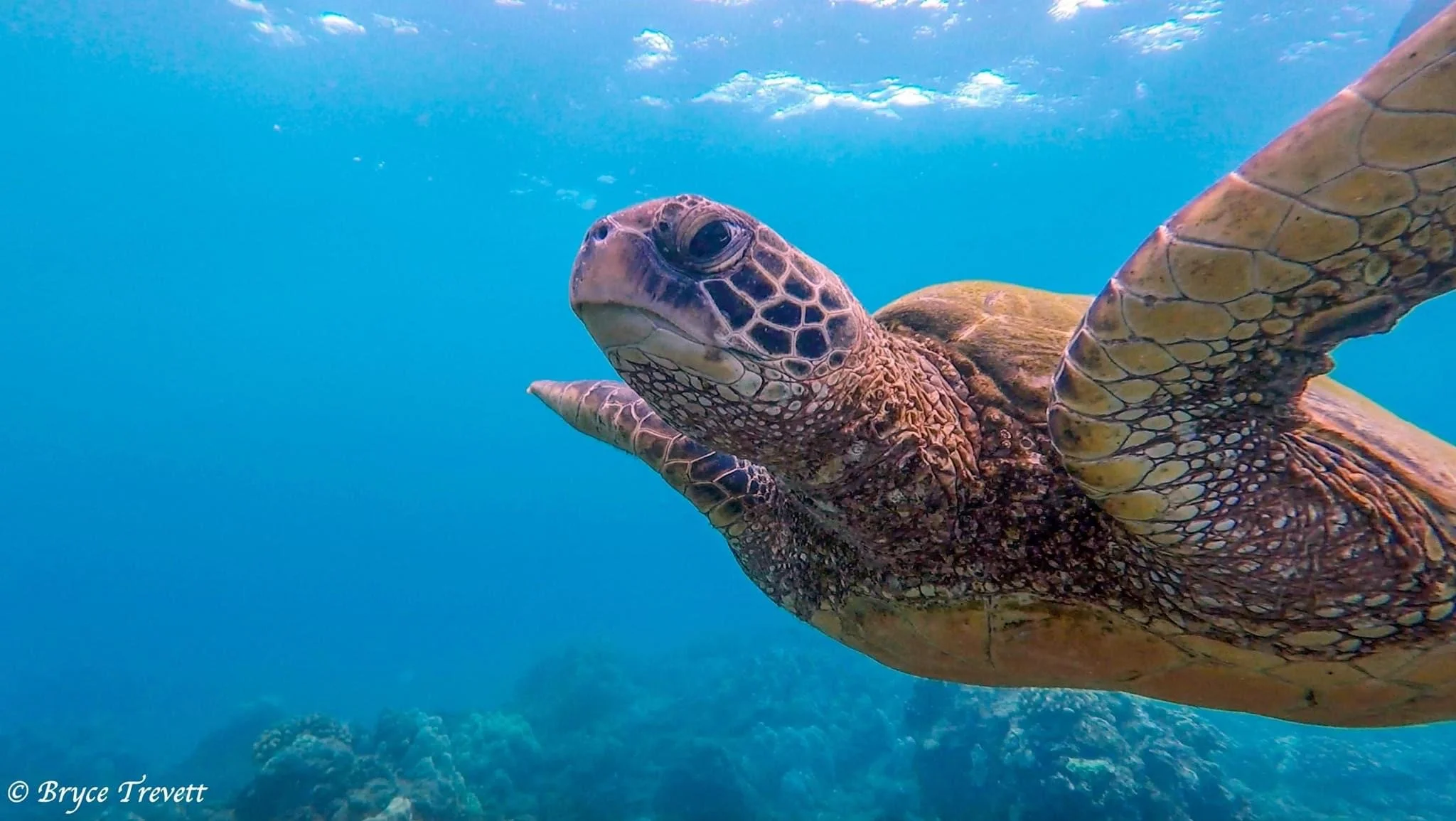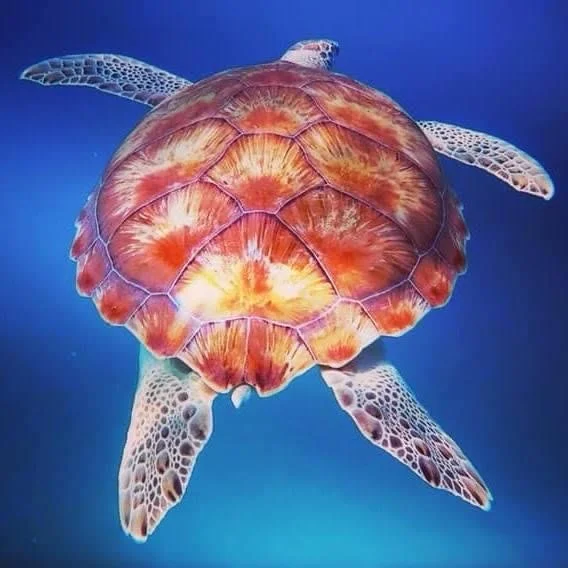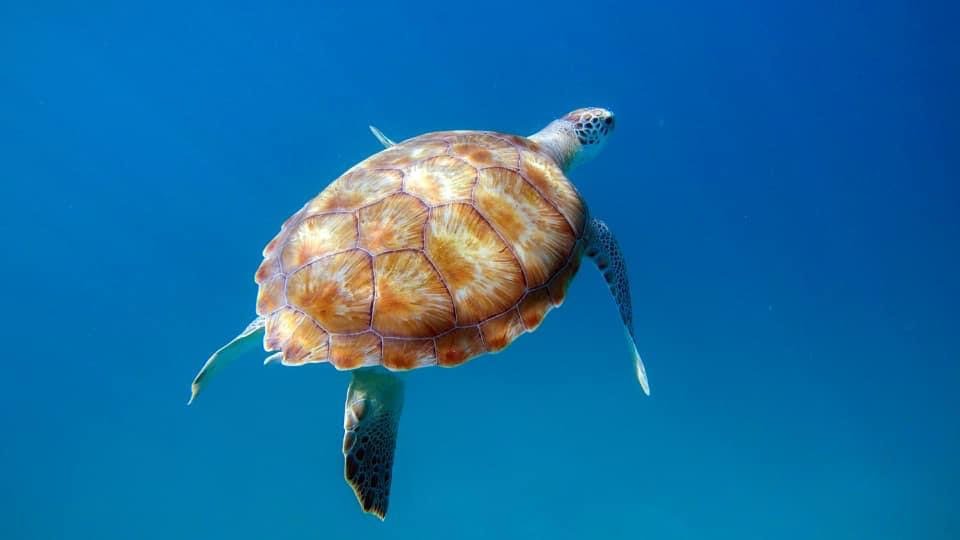He's an Animal -Rescuing a Sea Turtle From a Mylar Balloon By PV Native Adventurer Bryce Trevett
He's an Animal Rescuing a Sea Turtle From a Mylar Balloon
By PV Native Adventurer Bryce Trevett.
Here is the video of the sea turtle incident, as well as a video of collecting balloons out on the open ocean and how many we find in such a short amount of time. Once back on shore, we make sure these balloons are disposed of properly, but have always had the desire to incorporate them into something more beneficial, even somehow recycling the balloons into some kind of effort that is conservation based. An idea that we thought would be pretty cool is somehow creating a kayak or a kayak fleet that was made up of all these balloons. We don’t know how kayaks are made, but perhaps these balloons could be incorporated into the material used to make a kayak. Combining up all the different and vibrant/shiny colors of the balloons would create some very uniquely colored kayaks. The hope would be to then donate these kayaks to one of the kayak tour companies on Catalina island or any other wildlife viewing kayak based tour company in Southern California. It would be a special thing to see this disgusting and deadly ocean trash be recycled into an exciting activity that supports ocean conservation and ocean love. This “conservation kayak” is something we hope to make a reality someday in the future.
I think by now most of us are aware of the negative impact that balloons have on our planet. They trash every ecosystem from the desert to the ocean, and suffocate as well as entangle animals all across the animal kingdom from tiny fish all the way up to the largest animal that has ever lived on Earth, the blue whale. I certainly knew this early while growing up working with wildlife around the globe, but it really hit home one day when I was out on the open ocean about 15 miles off the coast of Palos Verdes with my buddy Angel as we approached a beautiful sea creature debilitated by a single mylar balloon.
It was a beautiful, sunny morning as we prepped our sea doos at the San Pedro boat launch for a full day out on the open ocean filming wildlife and free diving. Filming wildlife and adventuring into nature is our passion. Both Angel and I have spent our lives working with animals around the globe. Research and looking for wildlife to photograph has always been a big part of life for us. Our plan on this particular day was to head out into the middle of the Catalina Channel and locate some mako or blue sharks to dive with and film. We had all the gear loaded up. Our long free dive fins were strapped in with bungee cords, masks and snorkels at the ready, wetsuits and weight belts on, snacks and extra gas, and some shark chum to help the sharks find our location amongst the vast and deep region of the pacific ocean. We always strap all of our gear onto the outside of the sea doos so that we can leave the storage compartments available for the endless amounts of balloons and trash that we collect while on our expeditions. Almost every excursion results in these storage compartments overflowing with trash by the end of the day, especially balloons.
As the morning progressed out on the open ocean, we started making our way towards Catalina island. Along the way, we spotted what we initially thought was just another balloon. While on sea doos, we don’t have as high of a vantage point as one would get on a boat. You keep your eyes peeled as the swells rise and fall, searching for anything out of place. You will often spot just a piece of an object or the tip of a fin of an animal for a split second. It takes a few minutes sometimes to get a good look at what you are seeing and to develop a full picture of what it is. At the moment and from quite a distance, all we could tell was that this was a big golden balloon. As we got closer, the balloon actually vanished! It was strange because we were pretty dang sure we hadn’t lost position on where it was. It was a giant gold balloon for crying out loud, how can you lose sight of that?! A couple seconds later it popped up just behind us. As we approached again, it got pulled under and then came shooting back up like a fishing bobber. It was immediately obvious that something was attached to it below the surface! We cut our engines for a minute to assess what it was. In case it was a marine mammal like a dolphin or a whale, we wanted to make sure our engines were cut as to obey the laws as well not further startle the animal. Suddenly, a little coconut shaped head popped out of the water to take a breath. A sea turtle ! We quickly motored over to it and could clearly see that the animal was trying to dive but could not with all the balloon material keeping it afloat. We wasted no time in diving in to grab the entangled animal. Upon catching the animal, it was apparent how chaotically entangled it was by the mylar balloon strings. Loops of plastic string were cinched around the back flippers where they met the body, around the shell, around the front flippers, head and neck. There were also other longer pieces of string trailing from behind the animal which would have surely become eventually entangled as well.
We pulled the sea turtle up onto the sea doo to start cutting off the entangled mess. We decided to take a quick moment to document the incident and give some educational information about the negative impacts of balloons as well as why sea turtles are particularly susceptible to becoming victims. Both Angel and I have assisted in actual sea turtle research in Costa Rica with teams of biologists and have experience working with sea turtles professionally. We know a lot about their natural history, know how to safely handle them, and figured this would be a critical time to share that experience and knowledge in hopes of sparking awareness and even better, maybe some positive change.
This here is a young loggerhead sea turtle. Sea turtles are not very common around the Palos Verdes area. They do show up, but the species most often seen is the green sea turtle. It is even more uncommon to see a loggerhead sea turtle in these waters. The reason sea turtles are so susceptible to getting entangled as well as ingesting balloons and things like plastic bags is because many sea turtles eat jellyfish. Balloons and other “flappy” plastic products can look similar to a jellyfish swaying in the water. Jelly fish are not all just clear either. They come in endless shapes, sizes, and colors. Quite often, jellyfish colors can be vibrant and flashy just like a mylar balloon.
Bio:
Bryce Trevett is a wildlife enthusiast who has spent his life working with animals. He has assisted on wildlife research projects in six different countries, has been published in academic journals, acknowledged in field guides describing south East Asian reptiles and amphibians, and has spent time in many more locations photographing/filming animals on his own time as a hobby. He grew up in Palos Verdes, Ca where his passion for wildlife was sparked at an early age. Bryce studied herpetology at La Sierra University, and received a natural sciences degree from Los Angeles Harbor College. He spent many years volunteering at the Los Angeles zoo and a wildlife education center in Southern California. Throughout the years Bryce has worked as an emergency medical technician on an ambulance and in the emergency department. Bryce has most recently been working as a flight attendant for a major airline which allows him to travel around the world pursuing his wildlife goals and endeavors. He is currently in a pilot academy attaining his commercial pilots license. This career allows him to make a good living while at the same time allowing him to accomplish all his wildlife ambitions. Bryce spends his free time hiking, surfing, free diving, photographing wildlife, and participating in two step country dancing.
https://www.youtube.com/channel/UCXNFvjuLPccIvz5WP-CFUHw/featured
Related Articles









